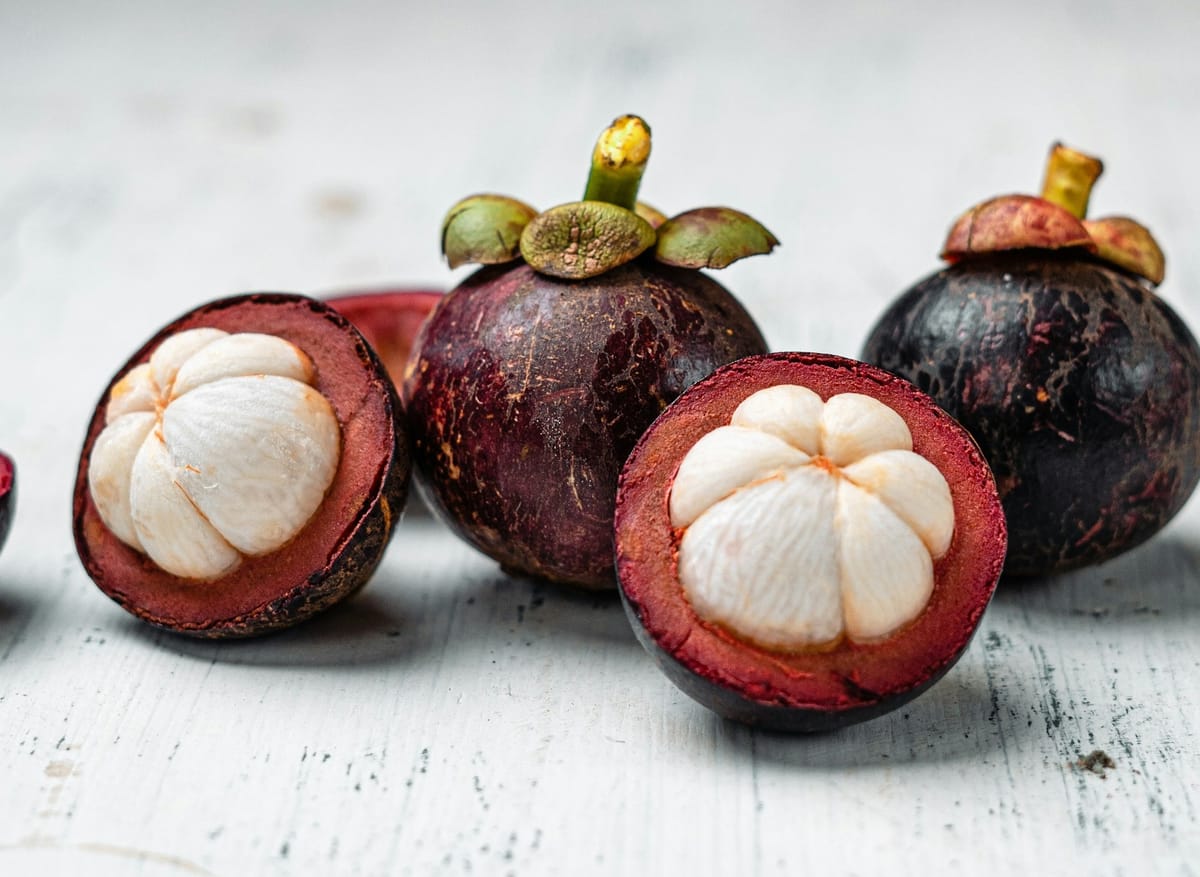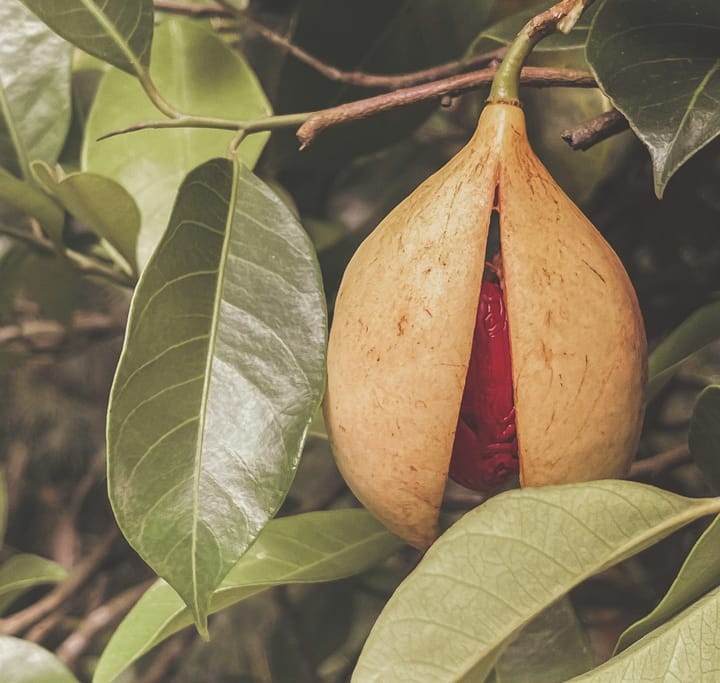Why Mangosteen Fruit So Expensive in the United States?
Discover why mangosteens command premium prices in American markets. From strict import regulations and costly irradiation treatments to their delicate nature and limited shelf life, these Southeast Asian "royal fruits" face unique challenges reaching US consumers.

Mangosteens—those small, purple fruits with pearly white segments inside—have earned the title "Queen of Fruits" throughout Southeast Asia.
The royal nickname has quite the backstory: legend has it that Queen Victoria was so intrigued by tales of this exotic fruit that she offered a hefty reward to anyone who could deliver fresh mangosteens from Southeast Asia to her table back in 19th-century England.
Her rumored obsession with the fruit helped cement its luxury status in food circles worldwide.
The catch? The shipping technology of her era made getting fresh mangosteens to Britain basically impossible, so the queen supposedly never got to taste what she craved most.
What's all the fuss about? The mangosteen delivers a flavor experience that's tough to nail down with simple comparisons.
Picture biting into translucent white flesh that hits you with an initial wave of delicate sweetness—think lychee meets peach—followed by bright citrus notes and just enough tartness to keep things interesting.
Food enthusiasts often pick up hints of vanilla and strawberry on the finish, while others swear they taste subtle floral notes that linger pleasantly.
The texture is where things get really impressive: it's incredibly tender and juicy without any of that stringy, fibrous mess you get with some tropical fruits.
Each segment practically melts in your mouth, leaving a clean finish that makes you immediately want another bite.
This incredible mangosteen flavor complexity, combined with the fruit's notoriously short shelf life—it starts going downhill within days of ripening—explains why Queen Victoria was so obsessed and why serious fruit lovers today treat mangosteens like edible gold.
That royal connection definitely boosted the mangosteen's prestige factor globally.
But here in American grocery stores, these fruits come with a price tag that'll make your wallet weep.
We're talking anywhere from $7 to $15 per single fruit, putting mangosteens in the running for most expensive produce in your typical supermarket.
So what's driving these eye-watering prices? It's actually a perfect storm of growing challenges, regulatory red tape, shipping nightmares, and cultural factors that all add up to one seriously pricey piece of fruit.
The Geographic Disconnect
Mangosteens (Garcinia mangostana) are native to the tropical regions of Southeast Asia, particularly Indonesia, Thailand, Malaysia, and the Philippines.
These trees require very specific growing conditions to thrive: consistent high temperatures between 75-95°F (24-35°C), high humidity, and abundant rainfall. They simply cannot grow naturally in most of the United States.
This geographic limitation creates the first and most fundamental challenge. Unlike apples or oranges that can be grown domestically, nearly every mangosteen sold in American stores must travel thousands of miles from its origin.
This journey begins the cost accumulation that eventually reaches consumers.
The Delicate Nature of the Fruit

Mangosteens possess a paradoxical combination of qualities that make them exceptionally difficult to transport.
Their outer purple rind, while appearing tough, is actually quite delicate and prone to damage. Inside, the white segments bruise easily and begin deteriorating quickly after harvesting.
The fruit's shelf life without specialized handling is remarkably short—typically just 7-10 days after harvest.
This creates enormous pressure on the supply chain to move these fruits quickly from tree to market before they spoil. Special refrigerated shipping containers must be used, adding significant costs to each shipment.
The Long Import Ban and Costly Irradiation
Perhaps the most consequential factor in mangosteen's high price in America was historical: until 2007, the United States Department of Agriculture (USDA) maintained a complete import ban on fresh mangosteens.
This prohibition lasted for decades and was based on concerns about potential fruit fly infestations, as the thick rind could potentially harbor these agricultural pests.
When the ban was finally lifted, strict irradiation requirements were implemented.
All imported mangosteens must undergo irradiation treatment to eliminate any potential pests.
This irradiation process doesn't come cheap—it requires specialized facilities, expensive equipment, trained personnel, and rigorous safety protocols.
The irradiation facilities themselves represent multi-million dollar investments that must be recouped through processing fees.
Each batch of fruit must be carefully monitored during treatment to ensure it receives the proper radiation dose—enough to eliminate pests but not so much that it damages the fruit quality.
This precision requirement adds to operational costs.
The irradiation process also introduces another handling stage where delicate fruits can be damaged, potentially increasing waste and further raising the effective cost per marketable fruit.
This mandatory treatment creates a significant cost barrier that smaller exporters often cannot overcome, limiting supply chain participants and reducing competitive pressure that might otherwise drive prices down.
Limited Production Capacity

Unlike mass-produced fruits like bananas or apples, mangosteen cultivation remains relatively small-scale.
Mangosteen trees are notoriously slow to mature, often taking 10-15 years before producing their first fruits. Once mature, each tree produces a relatively modest yield compared to many commercial fruit crops.
This slow growth cycle discourages large-scale commercial plantings, as investors must wait over a decade for returns.
The result is limited global production capacity, which naturally constrains supply and supports higher prices.
Complex Supply Chain Requirements
The journey of a mangosteen from a Southeast Asian orchard to an American supermarket involves numerous intermediaries, each adding their costs:
- Farmers who must carefully hand-harvest the fruits
- Local aggregators who collect from multiple small farms
- Processing facilities for cleaning, sorting, and irradiation
- International shipping companies using refrigerated containers
- Customs brokers handling import documentation
- Domestic distributors with cold storage facilities
- Retailers who must manage a highly perishable premium product
Each step requires specialized handling, and the fruit must remain in temperature-controlled environments throughout.
The complexity of this supply chain, combined with the fruit's perishability, means that shipments often travel by air rather than sea, further increasing costs.
Novelty Factor and Marketing Positioning
In the American market, this delicious superfood, mangosteens occupy a position as a luxury or novelty item.
Their relative scarcity, combined with their reputation as the "Queen of Fruits," allows retailers to position them as premium products.
Celebrity chefs and food media have amplified this reputation, creating consumer willingness to pay premium prices for the experience.
The social media landscape, particularly TikTok, has recently emerged as a powerful new factor in this premium positioning.
Starting in late 2023, mangosteens experienced a significant viral moment on TikTok when several influential food content creators began featuring the fruit in their "exotic taste test" videos.
These creators, some with millions of followers, documented their first experiences trying mangosteens, often with dramatic reactions to the fruit's unique flavor profile.
Many Americans purchase mangosteens not as regular dietary staples but as special treats or culinary adventures.
Hidden within the thick, purple pericarp (rind) lies an extraordinary biochemical treasure trove—the highest natural concentration of xanthones found in any food source.
This occasional purchase pattern supports higher price points than would be sustainable for everyday fruits.
Emerging Domestic Production
There are small-scale efforts to grow mangosteens domestically in the limited regions of the United States with suitable climates—primarily Puerto Rico and parts of Hawaii.
However, these operations remain niche and cannot yet produce the volume needed to significantly impact market prices.
The capital investment required to establish mangosteen orchards is substantial, and the long waiting period before trees produce commercial crops further complicates domestic cultivation efforts.
The Future of Mangosteen Pricing
Will mangosteens always remain a luxury item in American markets? The answer likely depends on several developing factors:
As import infrastructure matures and volumes increase, some economies of scale may emerge.
Improved post-harvest handling techniques could extend shelf life and reduce spoilage-related costs.
Growing consumer familiarity might eventually transform mangosteens from occasional splurges to more regular purchases, potentially supporting larger import volumes.
However, the fundamental challenges of tropical growing requirements, slow tree maturation, complex handling needs, and the significant cost burden of mandatory irradiation treatments suggest that while prices might moderate somewhat, mangosteens will likely remain among the more expensive fruits available to American consumers for the foreseeable future.
For those wondering if these exotic purple treasures are worth their premium price, the answer lies in the incomparable taste experience: the sweet, tangy, floral flesh that has captivated food enthusiasts across cultures and centuries—from Southeast Asian farmers to a British queen to modern American gourmands—and which continues to justify its royal title among fruits.


